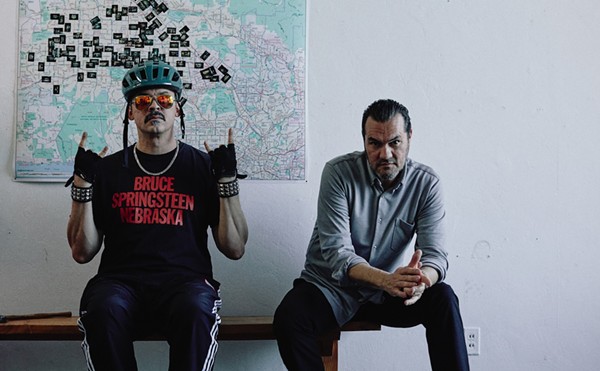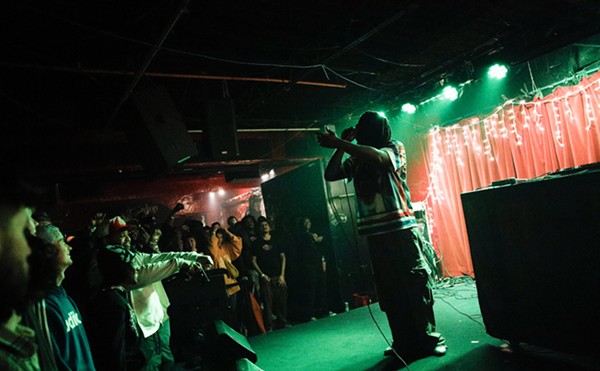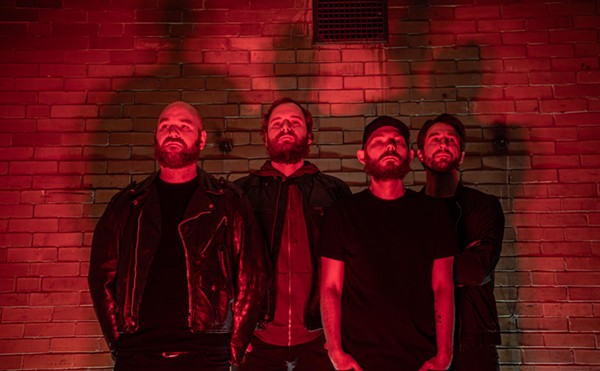When you name your band something like Big Head Todd & the Monsters, you’re just asking to be strangers in a strange land for all of eternity. But in the ’90s, the alternative radio dial was thankfully a welcoming place for a band like Big Head Todd (and for other bands with similarly oddball names such as Toad the Wet Sprocket, Primitive Radio Gods and the Mighty Mighty Bosstones). Even better, the diversity of the format meant that a group such as Big Head Todd that was riding the line between straight up rock and full-on blues could find airplay for its music.
The band formed in the mid-’80s in Boulder, Colo., initially focusing on playing shows regionally in the Colorado area. They later became road warriors, logging more than 100,000 miles in a 1977 Dodge van that they dubbed “the Colonel.” One of their early gigs found them in Chicago where comedian Chris Farley would join them onstage for a spontaneous version of the Rolling Stones’ “Beast of Burden” (a track which has remained an occasional occupant of the group’s set list through the years — they eventually recorded it for their Rocksteady album in 2010).
Big Head Todd emerged at a time when having a solid live show was still important and although these days the band is well-known for their live prowess, Todd Park Mohr, the group’s frontman/guitarist and principal songwriter, recalls that it took a bit of time to gel.
“I think for me personally it took a while to develop it,” he says. “I’m still amazed that people liked us back then, because I felt like I could barely play when I started. Part of that’s true and part of that’s not, but I certainly have enjoyed watching all of us get better over the years. I think we’re a much better band today than we were 25 years ago.”
By the time industry heavyweight Irving Azoff signed the group to his Giant Records imprint in 1992, it was ready to roll, having released two well received albums independently. Entering Prince’s Paisley Park Studios with producer David Z, Big Head Todd laid down the tracks that would form its 1993 major label debut Sister Sweetly.
The album had a potent mix of material that would leave the band plenty of ear candy for ammo, from the moodily contemplative “Bittersweet” to the ultra-funky title track and additional songs like “Broken Hearted Savior” and “Circle,” all of which remain set list staples nearly 21 years later. The Sister Sweetly album was meticulously packed from top to bottom with good songs and as the group discovered last year when it played the album in full at a few select performances, it still sounds great as a collection.
“One of the things that is interesting about that record is that it really is a good album from beginning to end and when you play it through live, it really holds up,” he says. “A lot of times, albums tend to be stacked so that the great stuff is at the very beginning and then they kind of die. That’s why a lot of album performances aren’t so great. But playing Sister Sweetly really was a super fun thing to do all of the way from the beginning to end.
For the band’s latest album, Black Beehive, a collaboration with producer Steve Jordan who oversaw the sessions, the band had plenty of material to work with, thanks to an extremely productive period of songwriting that had an interesting inspiration point.
“I did a lot of writing over the previous couple of years,” Mohr says. “Most of the songs came out of an experiment that I did where I was writing a song a day and performing it and posting it on YouTube. I did this for about a summer where I read the news — I called it the Daily Blues. I’d read the news and just pick out a story to write about. So a lot of these songs came out of that, like [‘Black Beehive’] which is the song about Amy Winehouse. [The news also inspired] ‘Fear, Greed and Ignorance’ and ‘We Won’t Go Back.’”
Mohr says that the exercise was a little bit out of character in comparison to his usual songwriting habits. He says that he “tends to write in spurts.”
“I’m always taking notes when a phrase occurs to me or an idea comes to me,” he says. “I use a program called Evernote so I get everything on every device. But I do have to challenge myself to get good results. Sometimes you’ve got to work at things every day and realize you’re going to write four or five mediocre songs to get the jewel. So it’s a little bit of a combo.”
Because of the nature of the songwriting method that Mohr employed, there was plenty of variety in the resulting songs.
“Some of them are kind of political and some of them are autobiographical. I sent Steve a demo with just me playing them on the acoustic guitar and singing. [It was] the roughest produced demo imaginable and he was thrilled by it. Originally, we were starting with six songs, and we were going to try to get through six songs in six days and I just kept pulling songs out of my ass and he liked them, so that’s kind of how things had went.”
They were thrilled to get the chance to work with Jordan as producer on the album. Mohr had met Jordan for the first time at a 2012 tribute concert for late blues man Hubert Sumlin (who in fact, gets his own tribute on the new album in the form of ‘Hubert’s Dream,’ a song that Mohr wrote on the day that Sumlin died). He thought that Jordan would be a good match as a producer for the group, and he was quite happy when he found out that the veteran producer and drummer was available.
“It was an absolute thrill when he agreed to do it,” he says. “Basically, what he brings to it is just the ability is to create a performance-oriented recording that’s about feel and about playing. He’s really excellent at arrangement and composition also, but he just knows how to get the most out of musicians and bands. We tracked the record, and it took us six days to make the record, which is unheard of for us anyway! He was just absolutely magical in the studio.”
A big part of the group’s ability to work efficiently in the studio came as a result of simply being able to quickly find the right zone, which was something that Jordan really helped with. “It was really just focusing on the feel of the rhythm section. This record, the parts are very simple parts and the arrangements are very simple, but it’s about feel. In order to get us started, he had us start with a Jimmy Reed song. He said, ‘Pick your favorite Jimmy Reed song,’ so we started with that just to get an understanding of each other and where he was willing to take the record.”
The title track eulogizes the talents of departed diva Amy Winehouse and her short life’s work left an indelible impression with Mohr.
“She’s an impeccable vocalist, her delivery and just everything about her,” he says. “The songs that she brought to the table were just so extraordinary. I never got a chance to see her live, but I was always captivated by the story. Obviously, it was a loss to everyone when she passed away. Nonetheless, I found her to be a really compelling person.”












